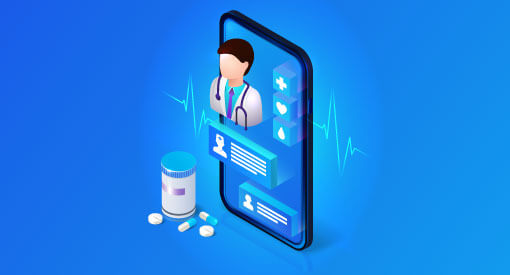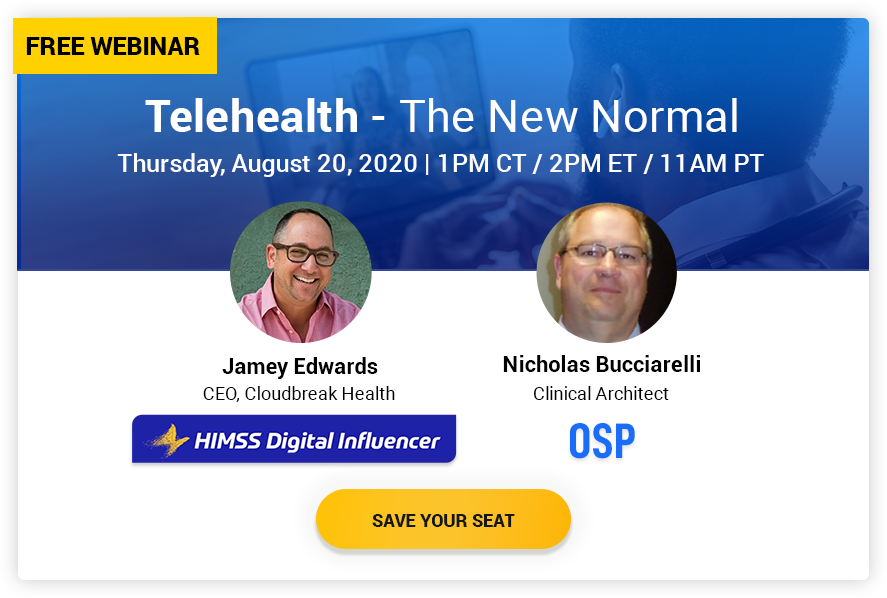Let’s look at the example of James. He is presently engaged with a local clinic through a virtual patient management app. Closer to his appointment, he gets a reminder from the app on his device. With all his medical history stored on the device and virtually accessible to the physician, this appointment is conducted virtually, through teleconferencing. The doctor accesses and modifies his prescriptions and reports based on the teleconference. James gets this updated version on his device. The medical administrative staff is then available for real-time assistance through live chats.
Furthermore, James can track his wellness progress through routine insights on this app. Finally, all payments can be securely made online on this very same application. James, as the patient, has been enabled with an end-to-end patient engagement experience. It offers convenience, builds and maintains trust, and works toward efficient utilization of time and services.
The Rise of Importance for Patient Engagement
As the healthcare sector advances toward value-based services, significant disadvantages of the traditional paper-based system have come to light:
- Time-consuming processes
- Limited physical space for storage
- Inefficient management
- Increased overheads
- Clinical errors
- Decreased qualitative assessments
- Limited accessibility to patients
- Lack of accountability
With a clear drive to improve patient outcomes, value-based medicine is an essential advancement that is quickly turning mandatory in terms of adoption among healthcare organizations. As consumer consciousness increases, the demand for value-based healthcare rightfully follows suit. The fee-for-service model is slowly but surely turning into a thing of the past. Keeping patients healthy and engaged through coordinated care proves to provide higher outcomes with a proactive approach, rather than a reactive one.
Through access to intelligent technology, healthcare providers are empowered to offer improved care models with increased access to data that identifies specific risks and enhances operations. Additionally, the healthcare organization benefits through decreased overall costs and increased quality in caregiving. Patients experience a higher level of satisfaction through the transparency of processes and workflows.
Leveraging Technology Toward Patient Engagement
With the importance of patient engagement laid out, let’s have a look at the four integral ways to use technology toward this end.
1. Redefining Patient Engagement with Telemedicine

There are several studies that have revealed the extent of improvement in patient care through the use of Telehealth. A March 2017 report from the University of California Davis found that telehealth access produced about $100 in travel time cost savings per patient per year. In total, Telehealth reduced travel distances by 5 million miles across the entire study population and resulted in $3 million saved in travel costs over a nine-year period.
There are several benefits to the implementation of Telemedicine. Listed below are a few:
- Reduced travel expenses
- Reduced high-cost care
- Avoidance of waiting time
- Increased accessibility
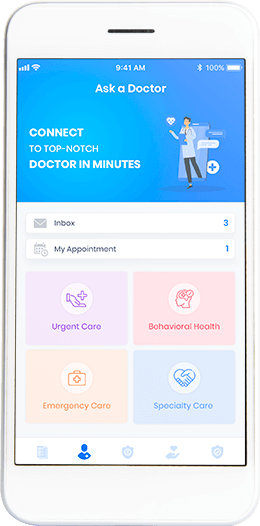
In the case of follow-up visits, Telemedicine has emerged as a sure shot winner with patients opting for this form of caregiving on a larger level. The satisfaction levels are considered at par, or sometimes even higher, through this method of healthcare. As part of a study, of a large hospital, it was realized that the quality of care communication was considered to be better than the traditional method of an in-person visit through virtual video visits with the physician. Additionally, the convenience of appointment times through telehealth apps is almost 80% higher than regular follow-ups. More than 50% of the participants rated the connection and satisfaction levels to be greater through Telemedicine.
As Telemedicine establishes itself strongly as the preferred choice for basic healthcare, it is moreover increasing its reign across specialist areas in terms of higher quality and patient satisfaction, including psychiatry, neurology, cardiology, and oncology. Finally, the rate of satisfaction with Telemedicine is observed across all age groups, not only millennials who we would assume are more well-versed with technology. Patients from remote areas are experiencing a sure shot benefit through this method.
2. Transforming Practice Management to Increase Patient Engagement

As healthcare organizations adopt intelligent technologies to create applications for patient engagement, the lifecycle of practice management is transforming toward added convenience and increased accessibility. Healthcare providers have been facing a constant challenge of consistent patient engagement and communication. To address this challenge, automated appointment scheduling, and reminders through interactive, multi-modal, and flexible communication strategies can be adopted. These communication workflows seamlessly integrate into the clinical systems, improving time efficiency, and reducing overall hassles.
As part of the practice management process, patient engagement and convenience can be further increased through the provision of online bill payment through the incorporation of wallets and co-pay systems. These automated processes will considerably reduce overall costs and paperwork. It can further work towards reducing errors and reclaims.
3. Promoting Patient Engagement Through Advanced Data Analytics
Engaging a patient is a crucial element in healthcare delivery quality. Empowering patients with a hand in controlling their health is a powerful step toward maintaining and increasing this quality. Through wearable devices and patient portals, big data is now accessible to the patient and physician alike. Advanced analytics can be applied to the meaningful interpretation and sharing of this data to draw useful conclusions.
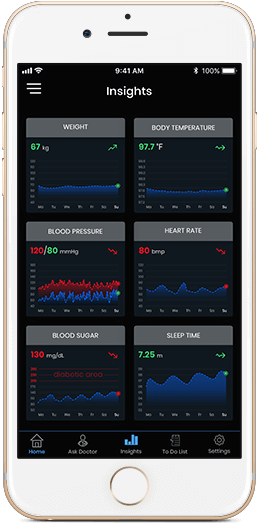
Patients with chronic diseases have a need to manage their health and sustain their treatment on an ongoing basis. Empowering these patients, through big data analytics, helps them to track their health and become active participants in their own care. Furthermore, customized treatment plans can be created to adhere to the specific requirements of individual patients, predictive analysis measure risk scores as well.
Advanced analytics can help build models that catch loopholes in overall workflows to increase the overall efficiency of the organization, along with prioritizing urgent care patients. Mental health patients are eligible to receive tremendous benefits through data analytics as they help the organization to strategize and extract actionable insights from unstructured data.
4. Simplifying Patient Engagement Through Patient Portals
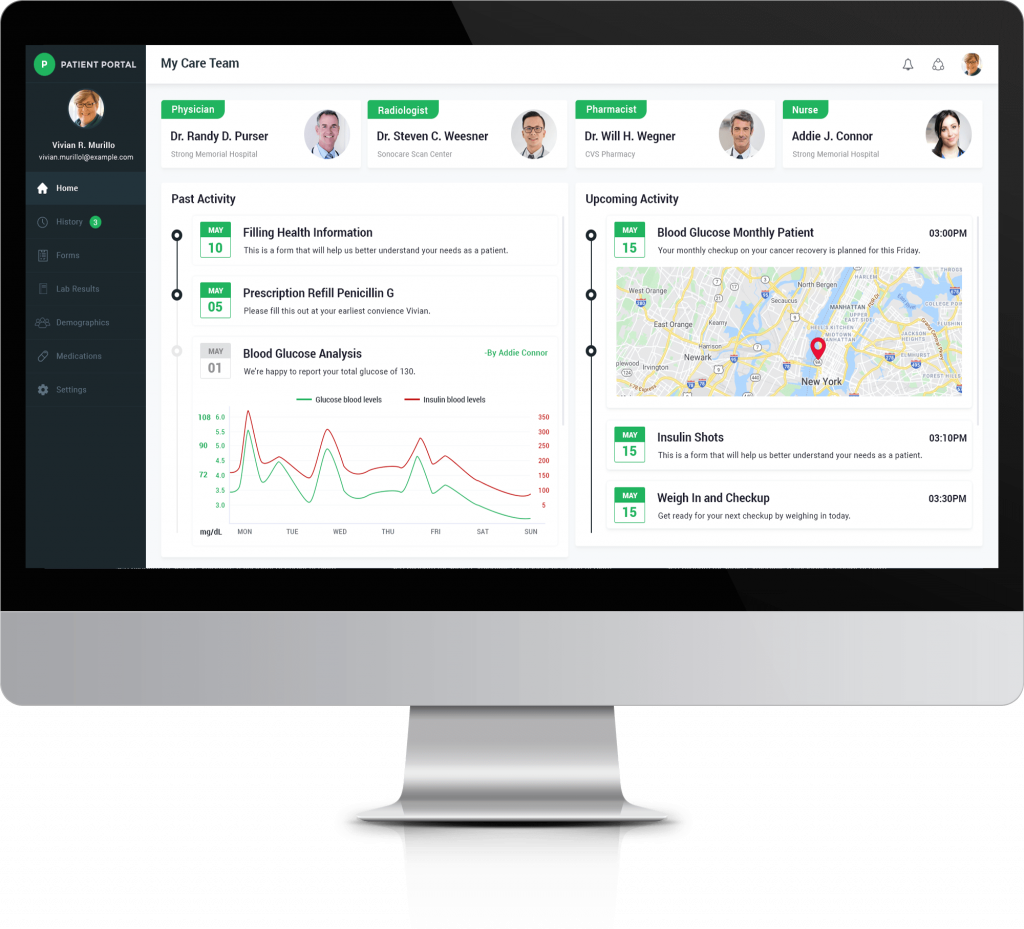
The advantages of a high functioning patient portal uniquely lend themselves to offering high-quality patient engagement. There are also significant advantages to the organization itself with features that offer proactive means of engagement through systematic processes. Some advantages are listed below:
- Increased and efficient patient activation
- Highly effective communication processes
- Empowering patients towards self-care
- Increased focus on priority patients
- Increased patient satisfaction
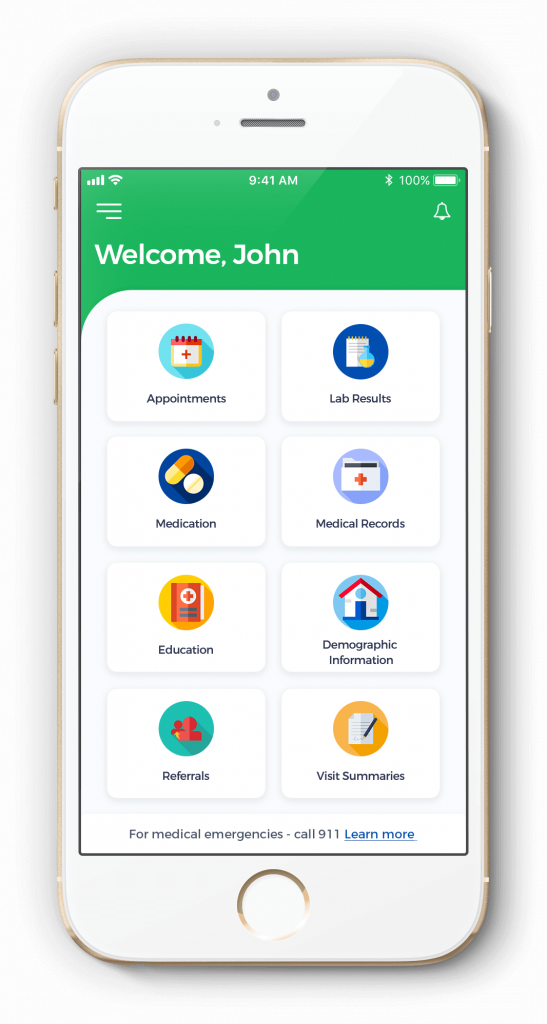
Furthermore, critical to the success of the portal is its comprehensive understanding by the healthcare staff and patients alike. Implementing a high-level patient portal aids in effective and automated clinical summaries, customized educational resource sharing, secure communication tools, increased accessibility to health information, and periodic reminders. Finally, the most important aspect of patient engagement is the patient’s involvement in the management of their own health, which can be significantly aided through a functional patient portal.
Conclusion
As we are faced with a situation of healthcare emergencies, amidst the COVID19 situation, technology is turning into a critical tool that will lend itself toward the successful evolution of the healthcare system across the globe. It carries the ability to transform the entire experience of patients through increased engagement. With the onset of Telemedicine, Big Data Analytics, and Patient Portals, patient expectations are on the rise, and healthcare organizations have to step up to the challenge. Keeping the patient’s needs as the focus of their organizational decisions will aid healthcare organizations to gain a competitive edge and boost their Return on Investment (RoI).
OSP is a trusted software development company that delivers bespoke solutions as per your business needs. Connect with us to hire the best talents in the industry to build enterprise-grade software.

How can we help?
Fill out the short form below or call us at (888) 846-5382
Looking for software solutions to build your product?
Let's discuss your software solutions for your product in our free development acceleration call!
Get In Touch arrow_forwardDiscuss Your Project Handover with a team of expert Book a free consultation arrow_forward
About Author

Written by Riken Shah linkedin
Riken's work motto is to help healthcare providers use technological advancements to make healthcare easily accessible to all stakeholders, from providers to patients. Under his leadership and guidance, OSP Labs has successfully developed over 600 customized software solutions for 200+ healthcare clients across continents.







